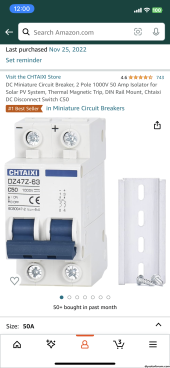Haskins
New Member
On the top of the picture I have two solar arrays coming in; one is 600w and the second 800w. The solar goes to two different Victron charge controllers. On the right I have my Cerbo-gx, Victron 30 amp charger when hooked into outside power. In the middle I have my dc-dc charger and renogy 3000w inverter. On the left I have 5 sok 206ah lithium batteries. From the inverter it goes to a transfer switch and then to the breaker panel of my motorhome. Any questions observations or concerns please let me know. Thank you for your time.
Just for reference you are looking down at the system. The dc-dc charger is flat on the ground.
Just for reference you are looking down at the system. The dc-dc charger is flat on the ground.
Attachments
Last edited:




